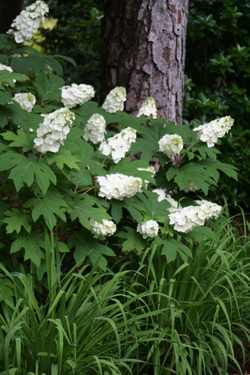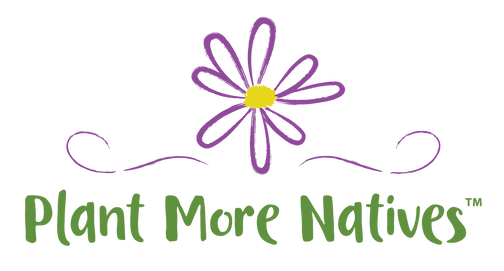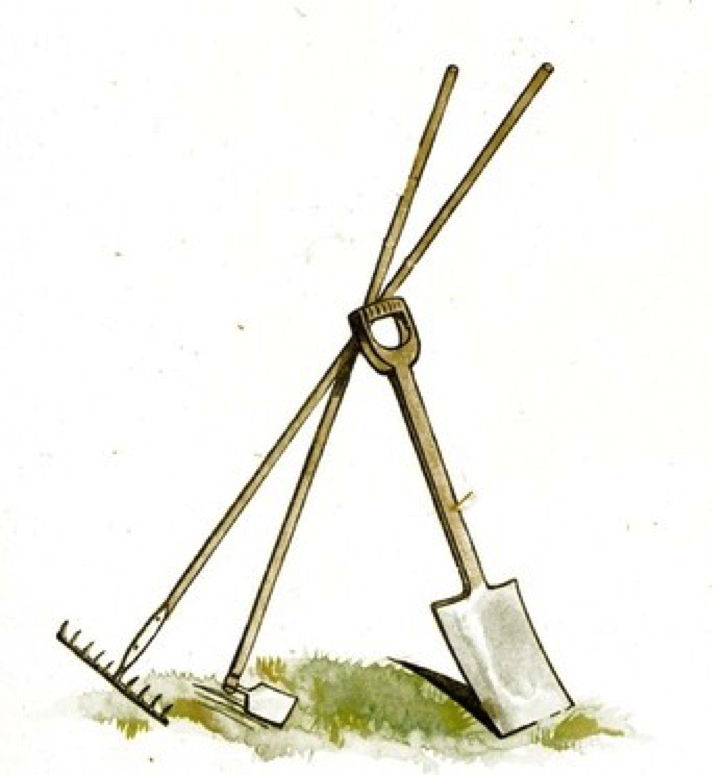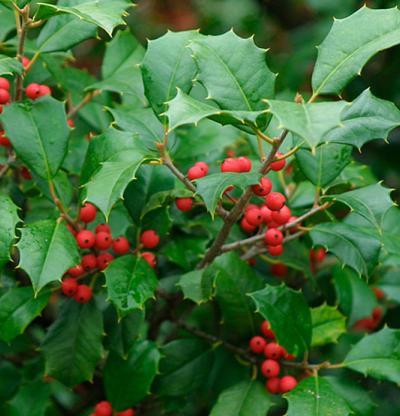Start by moving a bucket to the side and removing just enough soil from the hole to get the rootball in the ground. The top of the rootball should be slightly above grade. This will ensure the roots can breathe, since they need oxygen to develop a healthy structure. If the soil is too dense or sandy, mix in some compost to improve the structure. Rough up the roots a bit, set the plant in the hole, backfill, and finally, firm the soil with your foot. Although plant roots need a good flow of oxygen through tiny air pockets, they also need good contact with the soil to draw up water and nutrients, especially during transition. On to the next bucket…  Hydrangea quercifolia 'Snow Queen' Hydrangea quercifolia 'Snow Queen' You’ve finished planting and are ready to mulch. Again, I use tree chips from my tree service guys. However, you may prefer to use shredded mulch from a local distributer. Mulch heavily (2-3”) around your new plants, but do not mulch against the main stem(s) or trunk. Mulch can be applied at any time of year, but subsequent applications are easiest to spread when herbaceous and deciduous plants go dormant. If you’ve planned and planted your beds as I’ve suggested with plants touching at maturity, eventually, you will leave a thin layer of leaves in the middle of the beds and mulch only along the outer edge. For right now and a few years to come, mulching may be a time-consuming activity. But over time, not so much. Keep in mind... Year 1: plants sleep; Year 2: plants creep; Year 3: they leap. Some additional tips regarding initial irrigation, pruning and fertilization:
Happy Holidays!
|
Welcome to my journal. For over 20 years I've created original landscape plans to help homeowners increase property value and really enjoy their yards. I approach every project as an unique opportunity to develop a work of living art, one that will require minimal care and age beautifully with time. In this journal, I will share some of my field experiences and tricks of the trade with you. Feel free to email questions. Thanks for visiting.
Archives
February 2019
|





